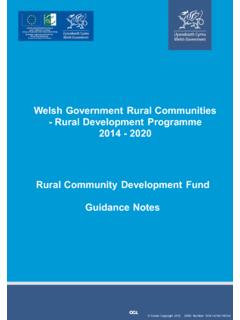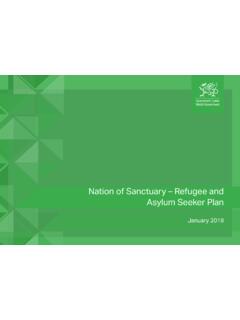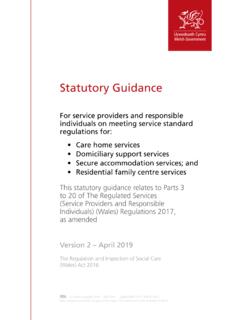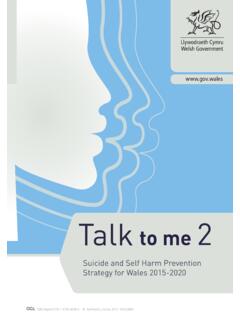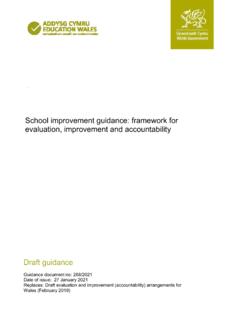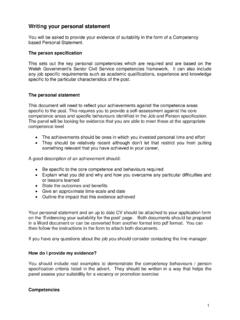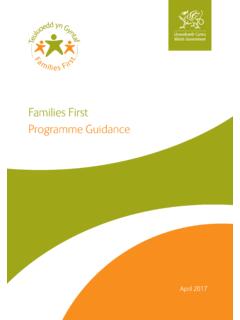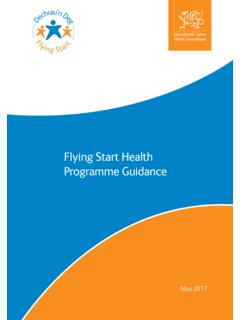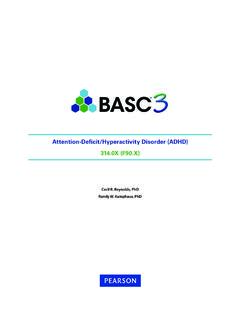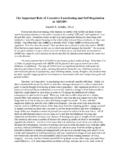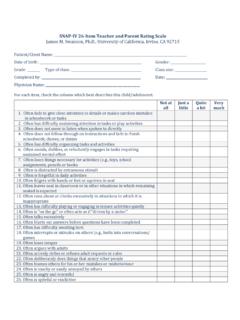Transcription of Ways of Supporting Learners with Attention Deficit ...
1 Support for children and young people with Attention Deficit hyperactivity Disorder ( adhd ) in educational settingsSupport for children and young people with Attention Deficit hyperactivity Disorder ( adhd ) in educational settingsAudienceParents/carers and practitioners Supporting children and young people with Attention Deficit hyperactivity disorder ( adhd ) in education settings. OverviewThis guide provides an overview of the extent to which interventions delivered in educational settings are effective in realising positive outcomes for children and young people with adhd . It was written by Bazian Ltd. The views expressed in this guide are those of the authors and not necessarily those of the Welsh requiredThis document may be of interest to practitioners and parents/carers when planning provision to support children and young people with adhd .
2 Further informationEnquiries about this document should be directed to:Additional Learning Needs BranchSupport for Learners DivisionThe Education DirectorateWelsh GovernmentCathays ParkCardiff CF10 3 NQe-mail: @WG_Education Facebook/EducationWalesAdditional copiesThis document can be accessed from the Welsh Government s website at documentsA Rapid Evidence Assessment of the effectiveness of educational interventions to support children and young people with Attention Deficit hyperactivity Disorder (Welsh Government, 2018)Mae r ddogfen yma hefyd ar gael yn document is also available in Welsh. Crown copyright January 2019 WG37031 Digital ISBN 978 1 78964 720 4 Contents Purpose and aim of the guide 2 Background 3 What is adhd ?
3 4 Support for children and young people with adhd 5 Types of approaches to support children and young people with adhd 6 Consequence-based approaches 6 Self-management and skills coaching 6 Cognitive behavioural self-regulation coaching 6 Academic and study skills coaching 7 Social skills coaching 7 Emotional skills coaching 7 Cognitive retraining 7 Motivational beliefs coaching 8 Biofeedback 8 Adapting the learning environment 8 Examples of adaptations to the learning environment 8 Creative-based therapies 9 Structured physical activity 9 Providing information 9 An example of a support package for Learners in further education 9 What the research says about what works 10 Other points to consider when designing and providing support packages 12 What improvements might be expected from using support packages for children and young people with adhd ?
4 14 What the research says about what doesn t work 15 Key points 16 Definitions 17 2 Purpose and aim of the guide This guide provides evidence about which approaches can be effective in Supporting children and young people with Attention Deficit hyperactivity disorder ( adhd ) whilst in education. The guide can be used by: parents; teachers, classroom-based support staff, early years workers and further education lecturers; special educational needs coordinators (SENCOs)/additional learning needs co-ordinators (ALNCos); headteachers, principals and senior leaders in education settings; local authority education services including specialist services such as educational psychologists; social workers; health professionals; third sector organisations; and advocacy services, dispute resolution services and the Special Educational Needs Tribunal for Wales.
5 Practitioners do not have to use the approaches set out in this guide. The guide does not set out what approaches must or must not be provided for children and young people with adhd . Rather, the purpose of the guide is to raise awareness of ways of Supporting children and young people which are known to work and the outcomes which can be expected from them, based on research findings. The research tells us what the average effect of these approaches is likely to be if they are used to support a number of Learners , but can t tell us how well they will work for an individual learner. Practitioners can use this evidence along with their own experience and knowledge when making decisions about approaches to support children and young people with adhd .
6 The aim of the guide is to support practitioners when planning and delivering timely and effective support for children and young people with adhd . Not all approaches outlined in the guide may be suitable for all children and young people with adhd . Approaches are likely to need to be tailored to each learner based on their needs and to the specific educational setting. Educators may find it useful to monitor how well their selected support packages are working for their Learners , so they know whether they are having the desired effects or need to be altered. 3 Background This guide is based on an assessment of research studies which have considered the effectiveness of approaches to support children and young people with ADHD1.
7 The assessment summarised the findings of the most reliable research studies on this topic published between 2000 and 2017. It looked at approaches which had been studied in any setting where children and young people receive education, such as preschools, schools, and further education institutions. A relatively small number of very good quality studies were identified. The assessment included seven reviews which summarised the findings of available research. The methods of two of these reviews were rated as very good quality, four as good quality, and one as low quality. The reviews included between five and 100 studies. A lot of the studies which the reviews included had some weaknesses.
8 For example, not all studies included a control group to find out what happened if children and young people did not receive the support being tested. The assessment also included an additional four recent studies which had not been included in the reviews. These studies were picked because they used strong methods which made it easy to identify what impact the support packages were having. For example, all of these studies included a control group. One of the studies was rated as very good quality and the other three as good quality. Many of the studies included relatively few children or young people. This means what they found may not be representative of what would happen in the wider population of children or young people with adhd .
9 In addition, small studies might miss important changes in Learners outcomes. As new studies are carried out in the future, they will tell us more about the impact of approaches to support young people with adhd . This may mean what is thought to be effective could change over time and new approaches are likely to be developed. 1 The full rapid evidence assessment is available from 4 What is adhd ? adhd is a condition where the affected child or young person has levels of inattention, hyperactivity and/or impulsivity that are abnormally high for their age, and impact on their day-to-day life. The child or young person may not have all three of these aspects of adhd and how severe each aspect is will vary between individuals.
10 Not all children and young people with adhd will have been diagnosed as having adhd and not all children and young people with poor Attention will have adhd . In individuals with adhd , signs of the condition usually start before the age of seven, continue through adolescence, and can carry on into young adulthood. Individuals with adhd are often affected by other conditions such as conduct disorder, anxiety, depression and learning difficulties. Children and young people with adhd typically find it difficult to focus and pay Attention in educational settings and may display problem behaviours in class. This can result in poor academic performance and attendance, a need for special education provision, in some cases exclusion from school, and making it less likely for them to go on to further education2,3.

